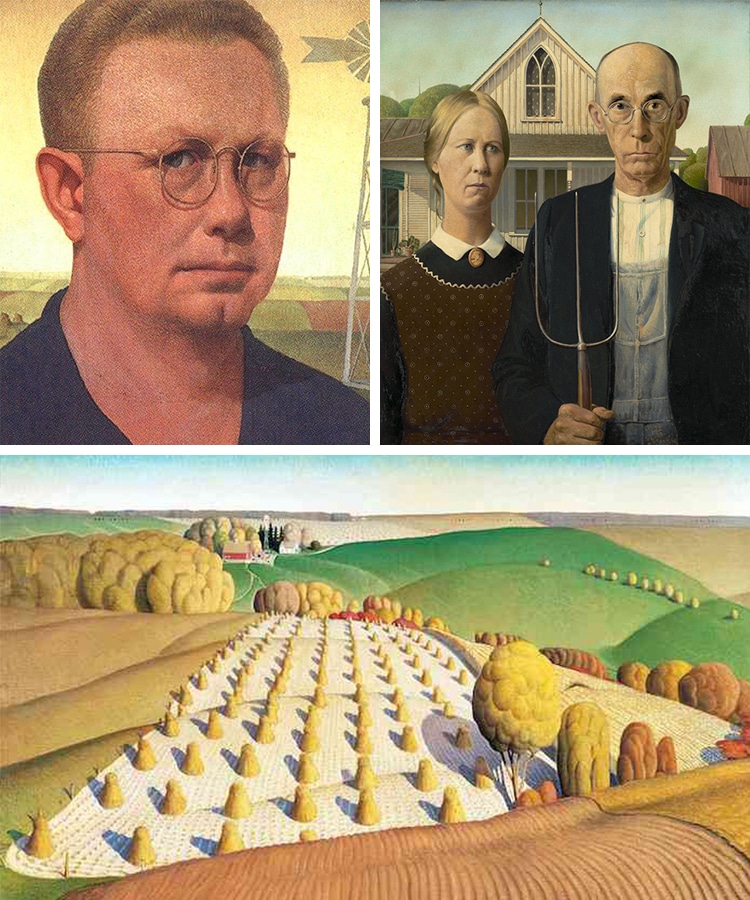
This post may contain affiliate links. If you make a purchase, My Modern Met may earn an affiliate commission. Please read our disclosure for more info.
The 20th century marked a time of great artistic growth in the United States. One of the most famous paintings to emerge from this era is Grant Wood's American Gothic. Featuring a stoic depiction of a farmer and his daughter, this detailed portrait has pervaded pop culture in numerous ways since its original debut in 1930. And while many are familiar with this iconic work of art, less is known about its creator.
Born and raised in the Midwest, Wood was a major pioneer of regionalism, an art movement that was centered around depictions of rural America. Although he spent the majority of his life in the U.S., he traveled to Europe several times in his life, during which time, he developed a keen interest in the Northern Renaissance and its emphasis on realism and meticulous detail. These diverse interests—in daily American life and European artistic traditions—ultimately culminated in his magnum opus.
Here, we will learn more about Wood and his impact on American art.
Who is Grant Wood?
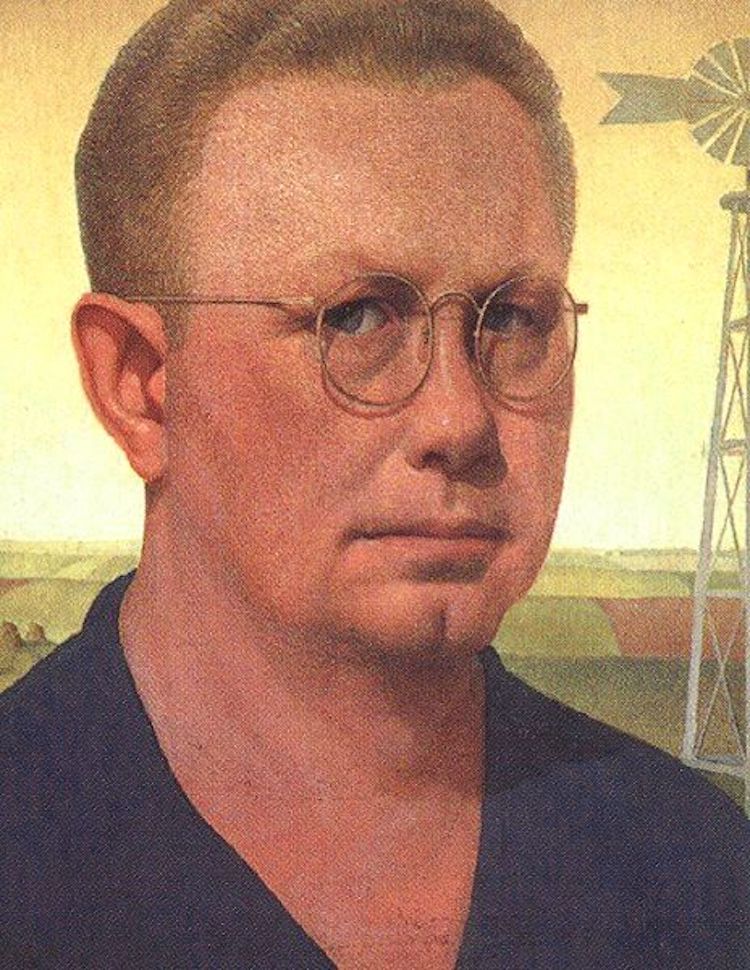
Grant Wood, “Self-Portrait,” c. 1925 (Photo: Russell A. Figge Art Museum via Wikimedia Commons, Public domain)
Grant Wood (1891–1942) is an American artist best known for developing the regionalist style, and for creating the iconic painting, American Gothic.
Originally from Iowa, he spent much of his youth traversing the Midwest. After receiving a formal education in art at the School of Art Institute of Chicago, Wood briefly served in WWI. Afterward, he worked for a number of years as a teacher, which provided him with not only financial stability but also the freedom to make trips to Europe, where he studied famous artists, most notably Jan van Eyck, a Flemish artist best known for his detailed works in oil.
It was during this time, in the 1920s to 1930s, that he began producing paintings in the style he is known for.
Art Style
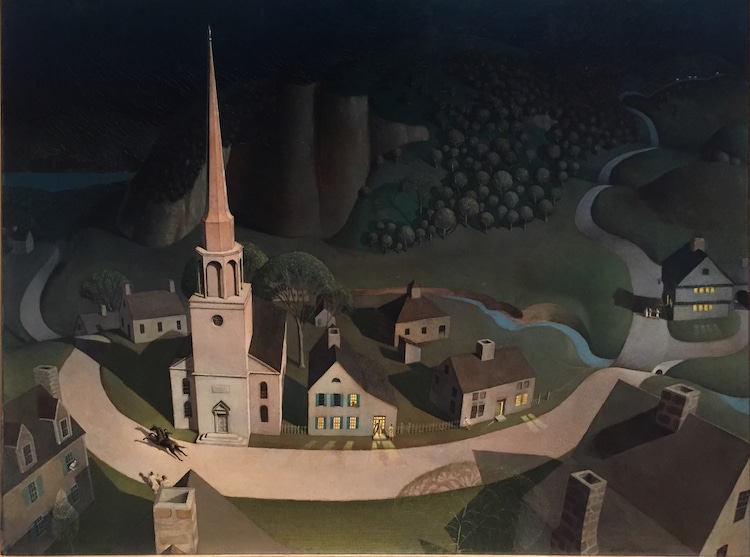
Grant Wood, “Midnight Ride of Paul Revere,” 1931 (Photo: TG 642 via Wikimedia Commons, Public domain)
In contrast to some of the Modern art being produced during the early 1900s, Wood's art style was more realistic. Influenced by the work of old masters, he sought to portray American life as he saw it. His paintings display an interest in modeling, effective use of light and shadow, and complex compositions. “Technique does not constitute art,” he said. “Nor is it a vague, fuzzy romantic quality known as ‘beauty,’ remote from the realities of everyday life. It is the depth and intensity of an artist’s experience that are the first importance in art.”
In addition to his technical approach, Wood also embued his art with deep meaning that has been often misunderstood. While some believe his depictions of the Midwest to be critical of their—and his own—culture, he always stressed that the reverse was true. His carefully crafted canvases stemmed from an appreciation for his home state and the agricultural side of the United States.
Regionalism
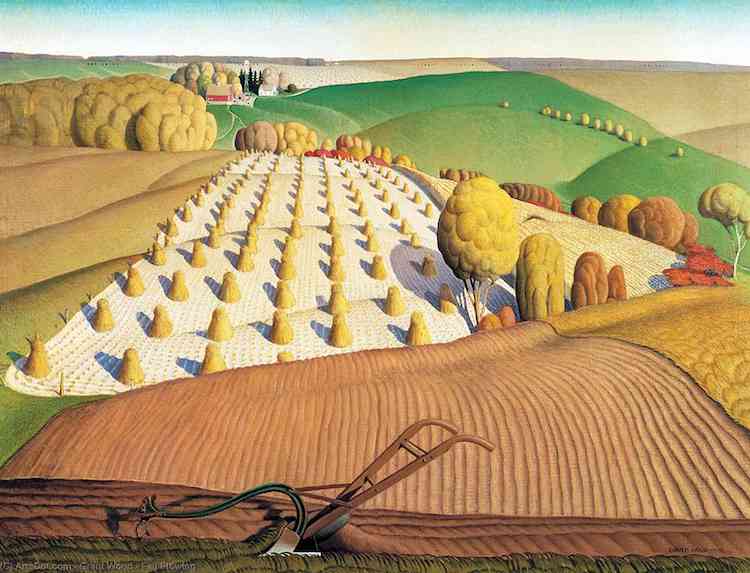
Grant Wood, “Fall Plowing,” 1931 (Photo: Viola via Wikimedia Commons, Public domain)
Regionalism is a Midwestern art style that developed as a reaction to the abstract art that was being produced in Europe during the 20th century. Instead of leaning into an abstraction of form and color, regionalism emphasized realism, especially in regard to figurative paintings and depictions of rural life in the American Midwest.
It rose in prominence during the Great Depression by highlighting what daily life was like for many people during this time. Wood was one of the major American artists working in this style, which can be clearly seen in his portfolio of artworks dedicated to agriculture and portraits of working-class folks. Through his encouragement, other regionalist painters relocated back to the Midwest, fostering a greater sense of artistic community.
Wood himself spent the remainder of his life in Iowa, teaching painting at the University of Iowa, and contributing to the creative community in his home state.
Famous Paintings
American Gothic
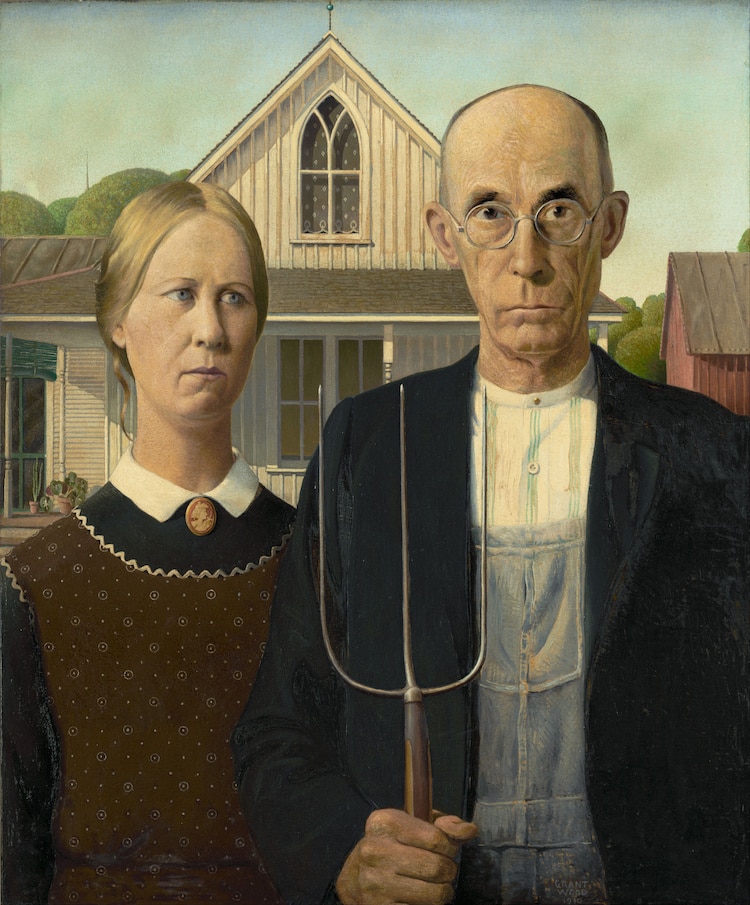
Grant Wood, “American Gothic,” 1930 (Photo: Art Institute of Chicago via Wikimedia Commons, Public domain)
Featuring a stoic portrait of a farmer and his daughter, Wood's American Gothic offers a fascinating glimpse into life in the rural United States. While many have misconstrued its meaning and misinterpreted its subject matter since its debut in 1930, this depiction of small-town life remains one of art history's biggest icons.
The house in the painting is based on a real-life structure that Wood came across in Iowa. Known as the Dibble House, this humble abode was built in 1881 in a Gothic Revival style called Carpenter Gothic. In addition to its Gothic elements, however, Wood was drawn to its characteristically “rural” appearance, typified by its small stature, cream-colored walls, and shingled roof. When he spotted the home, it immediately caught his eye—and sparked his imagination.
The figures in the painting play the roles of a farmer and his daughter, however, neither of the real-life inspirations held that occupation. Wood's sister, Nan modeled for the woman on the right, while the man is based on the artist's dentist.
Overall, the highly detailed approach to American Gothic has made it a hallmark of the regionalist style.
Legacy
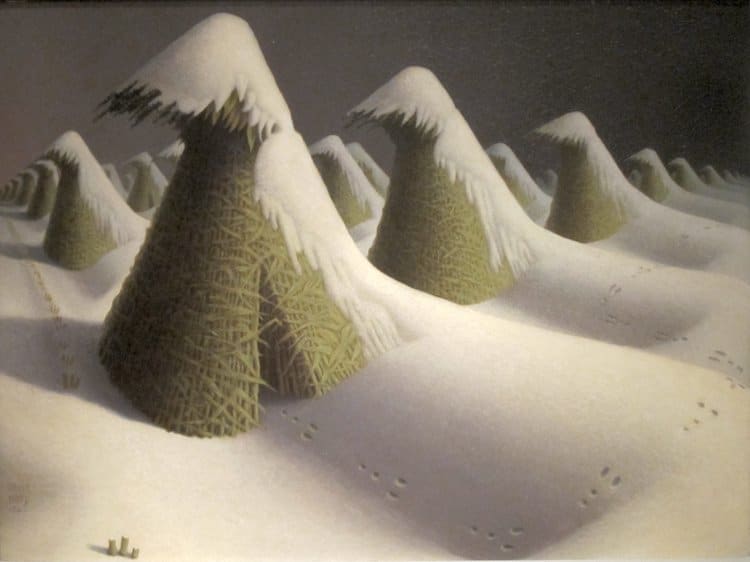
Grant Wood, “January,” 1940–1941 (Photo: Wmpearl via Wikimedia Commons, Public domain)
After his death, Wood's estate was left to his sister, Nan. When she eventually passed away, his art was donated to the Figge Art Museum in Iowa.
Although he only lived to the age of 51, Wood's impact on American art is undeniable. American Gothic alone became an icon of early 20th-century art that is so distinct that it is still famous today. However, in addition to his physical oeuvre, Wood's interest in capturing rural life was influential in the development of art in the U.S.
Books About Grant Wood
Frequently Asked Questions
Who is Grant Wood?
Grant Wood is an American artist known for developing the Regionalist art style and for creating the painting American Gothic.
What is Grant Wood famous for?
Grand Wood is famous for creating the painting American Gothic.
Related Articles:
20 Famous American Artists You Should Know
California Impressionism: How American Artists Adapted French ‘Plein Air’ Painting
10 Famous Abstract Artists Who Changed the Way We Look at Painting






















































































